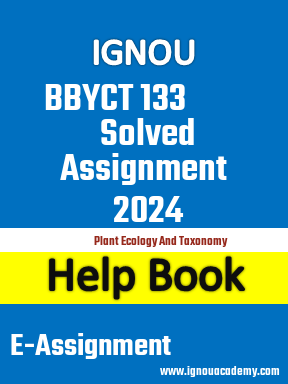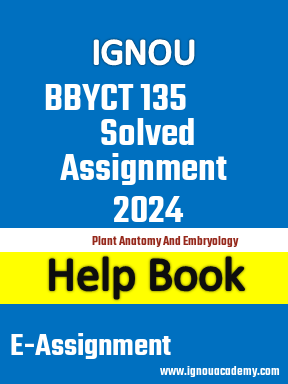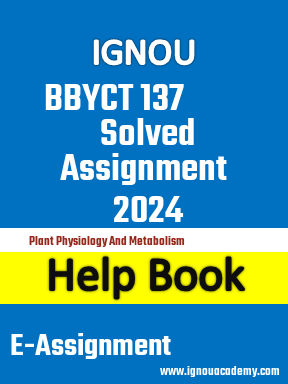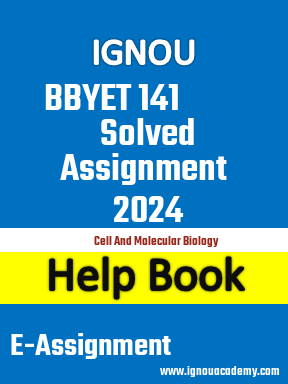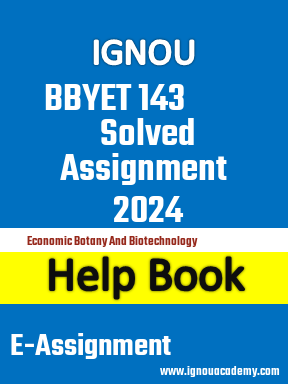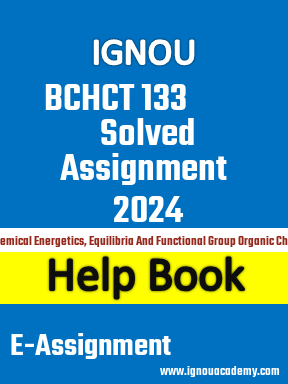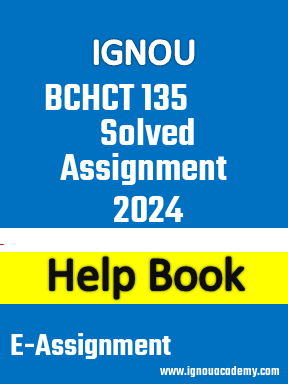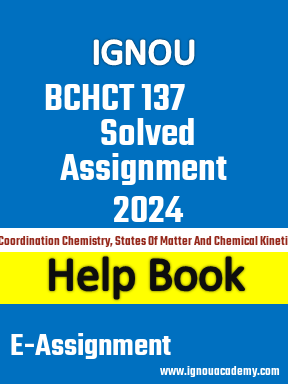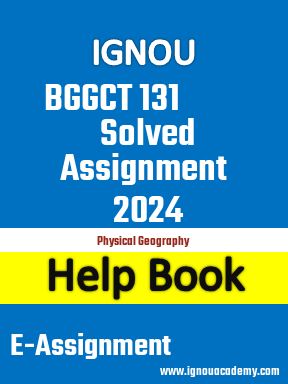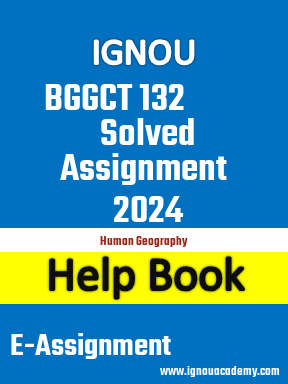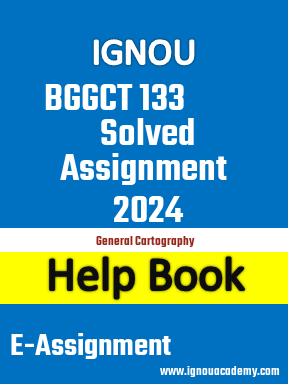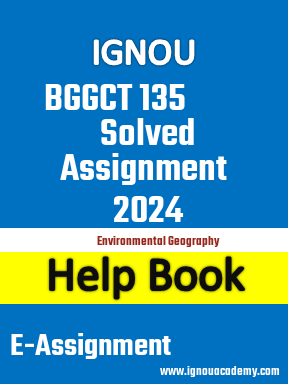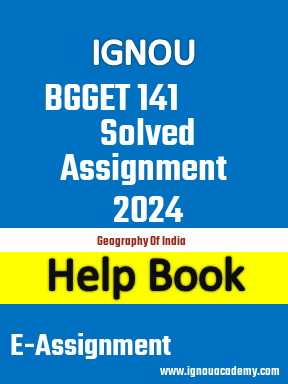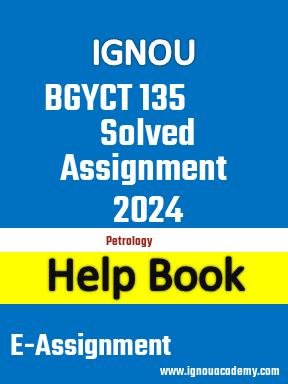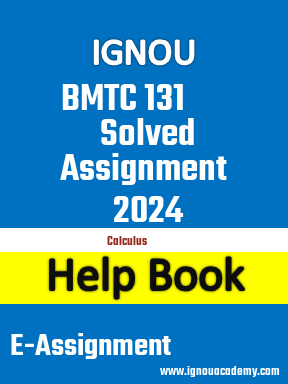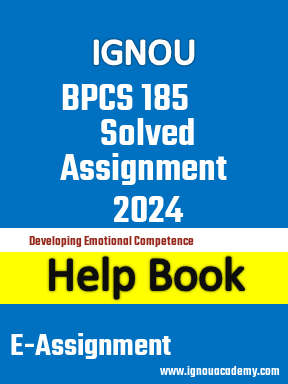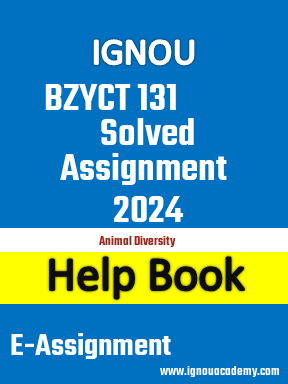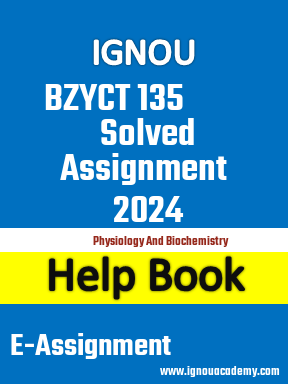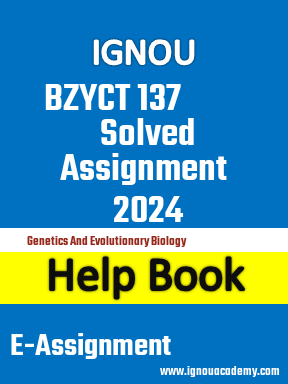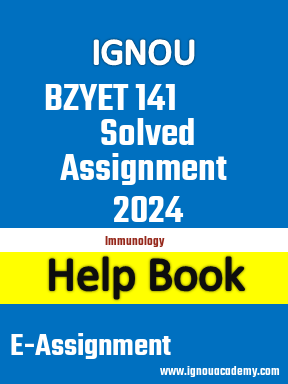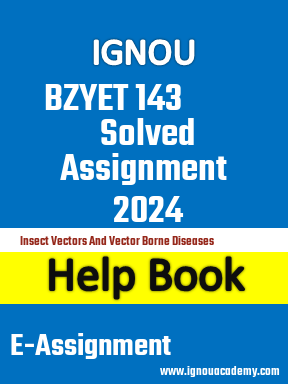My Cart
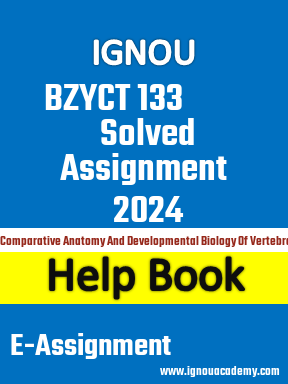
|
|
IGNOU BZYCT 133 Comparative Anatomy and Developmental Biology of Vertebrates Solved Assignment 2024
IGNOU BZYCT 133 Comparative Anatomy and Developmental Biology of Vertebrates Solved Assignment 2024|
|
| Title Name | ignou BZYCT 133 solved 2024 |
|---|---|
| Type | Soft Copy (E-Assignment) .pdf |
| University | IGNOU |
| Degree | BACHELOR DEGREE PROGRAMMES |
| Course Code | BSCG |
| Course Name | Bachelor of Science |
| Subject Code | BZYCT 133 |
| Subject Name | Comparative Anatomy and Developmental Biology of Vertebrates |
| Year | 2024 |
| Session | - |
| Language | English Medium |
| Assignment Code | BZYCT-133/Assignmentt-1//2024 |
| Product Description | Assignment of BSCG (Bachelor of Science) 2024. Latest BZYCT 133 2024 Solved Assignment Solutions |
| Last Date of IGNOU Assignment Submission | Last Date of Submission of IGNOU BZYCT-133 (BSCG) 2024 Assignment is for January 2024 Session: 30th September, 2024 (for December 2024 Term End Exam). Semester Wise January 2024 Session: 30th March, 2024 (for June 2024 Term End Exam). July 2024 Session: 30th September, 2024 (for December 2024 Term End Exam). |
| Assignment Code | BZYCT 133/2024 |
|
|
Questions Included in this Help Book
Ques 1.
Write two important differences between scales of reptiles and fishes.
Ques 2.
Explain keratinization in terrestrial vertebrates.
Ques 3.
Mention the two types of endoskeletal structures found in vertebrates. What is the difference between their ground matrix?
Ques 4.
Fill in the blanks in the following sentences by selecting an appropriate word from those given in the parenthesis after each sentence:
i) The skeleton of the head is known as ……………………. (vertebral column, pelvic girdle, skull).
ii) Cranium encloses and protects the ……………………… (eye, heart, brain).
iii) The brain within the cranium is in contact with the spinal cord through ………………………… an aperture found at the hind end of the cranium (fenestra ovalis, foramen magnum, external nares).
iv) The vertebra with concavity infront and convexity behind is called …………………. type (amphicoelous, procoelous, opisthocoelous).
v) The bone humerus of the upper arm articulates with the pectoral girdle at ……………………… cavity (glenoid, acetabulum, zygapophysis).
vi) Radio-ulna, a composite bone is found in ……..…………….. (rabbit, bat, frog).
Ques 5.
Describe the structure of the respiratory system of cartilaginous fishes and state how it differs from that of bony fishes.
Ques 6.
Briefly discuss the mechanism of pulmonary respiration in frog. How is it different from reptilian mechanism of respiration?
Ques 7.
Write short note on the general structure of heart wall.
Ques 8.
Name different stages in the evolution of heart.
Ques 9.
Draw a well labeled diagram of the internal structures of ovary and describe the structures present in it.
Ques 10.
List at least three stages in gene expression that can be regulated to result in differentiated cell types? Explain any one of them with the help of an example.
Ques 11.
Mark the following statements as ‘True’ or ‘False’:
i) During development cells move by extending their cell processes in all directions without any polarity.
ii) The cytoskeleton of the cell is actively involved in cell movement and cell shape change.
iii) Cadherin on one cell binds strongly to similar cadherins molecules on other cells.
iv) Integrins are cell adhesion molecules that attach cells to other cells at the apical region.
v) Permissive interaction involves gene expression in the induced cell.
vi) Morphogens are paracrine signalling molecules.
vii) In apoptosis the cell organelles are delivered to lysosomes and the cell contents are spilled out.
viii) Cell death by necrosis indicates that cell has undergone a toxic reaction.
ix) Optic cup is induced to form the retinal layers by reciprocal induction from the lens.
x) Pattern formation is the result of morphogenesis.
Ques 12.
Briefly describe the spermiogenesis process
Ques 13.
What are the major differences in the development and differentiation of an egg and a sperm?
Ques 14.
Describe the process of neurulation in chick.
Ques 15.
How is the placenta formed? What are its functions?
Ques 16.
Draw a flow chart to show how the three germinal layers are derived from the zygote
|
|
Related Assignments
IGNOU Doubts & Queries
Click to Contact Us
Call - 9199852182 Call - 9852900088 myabhasolutions@gmail.com WhatsApp - 9852900088